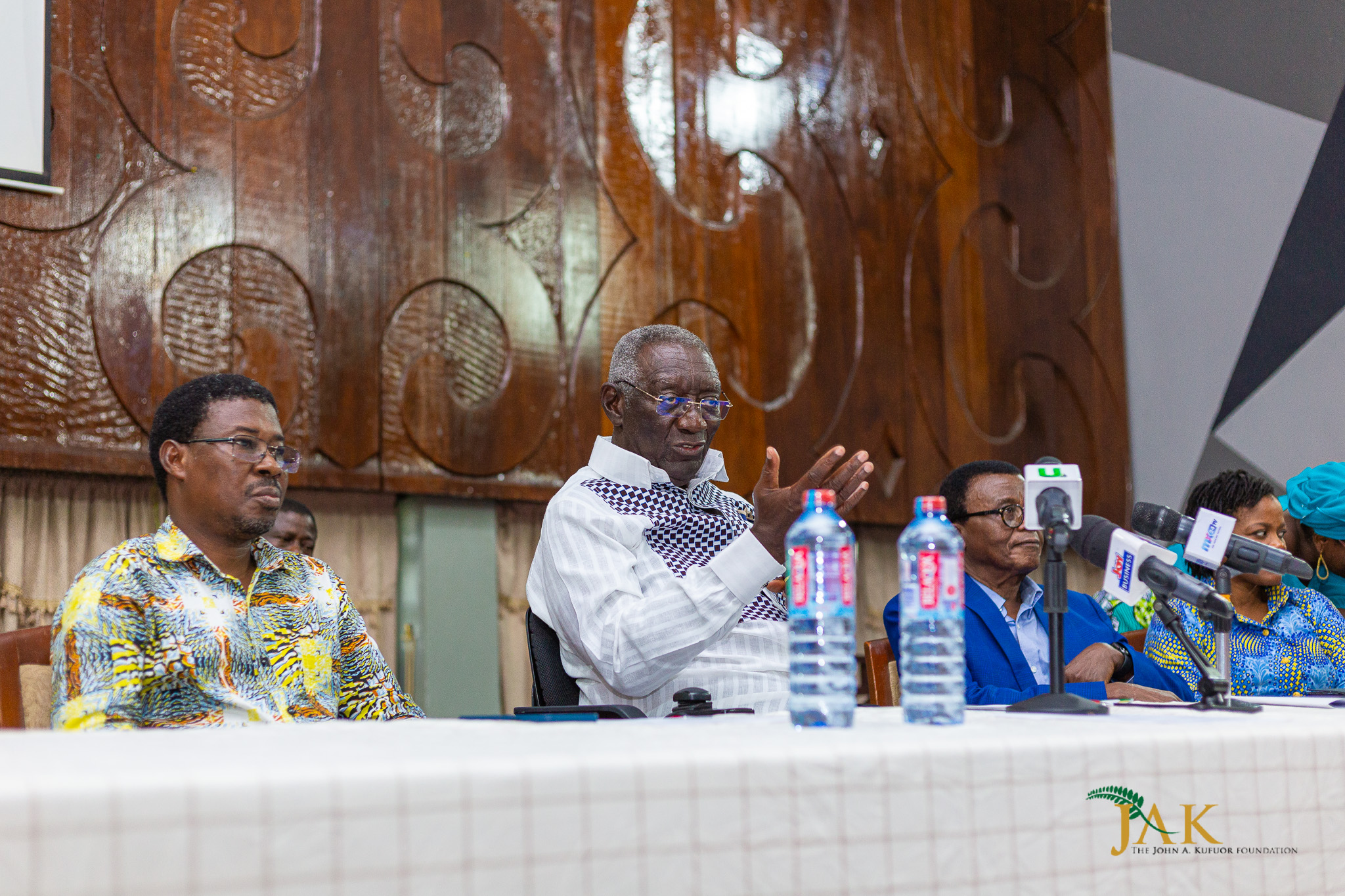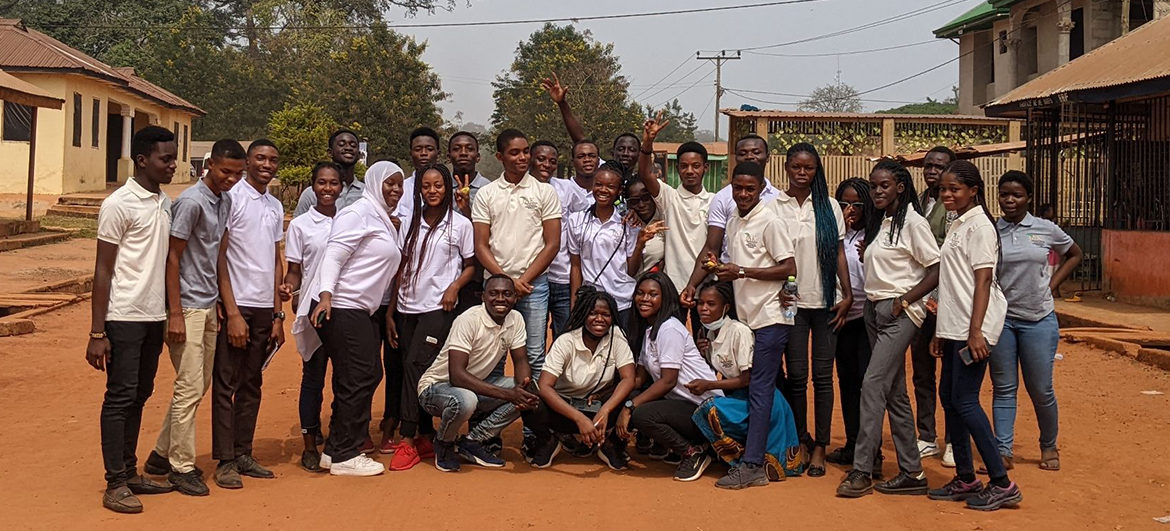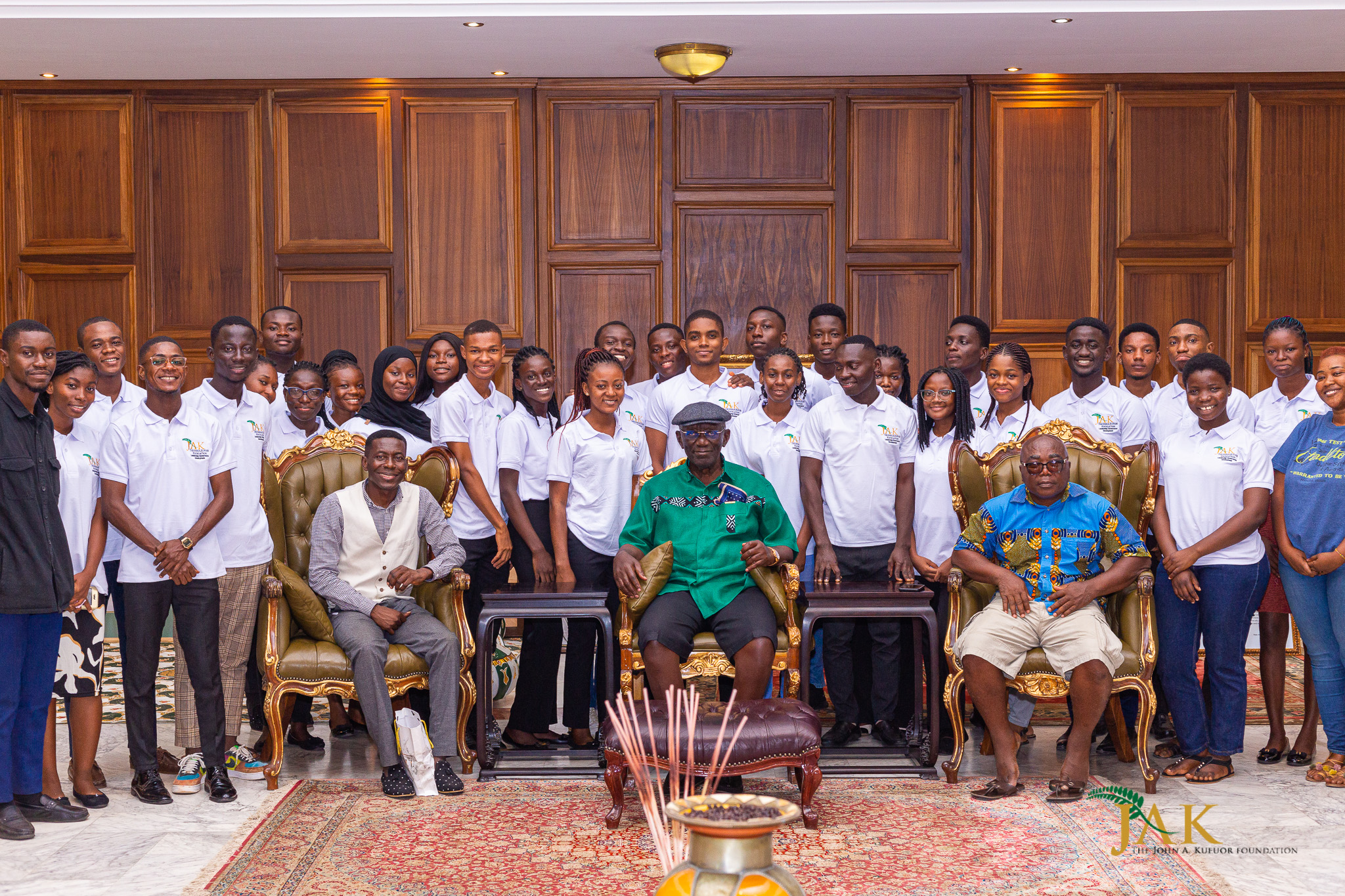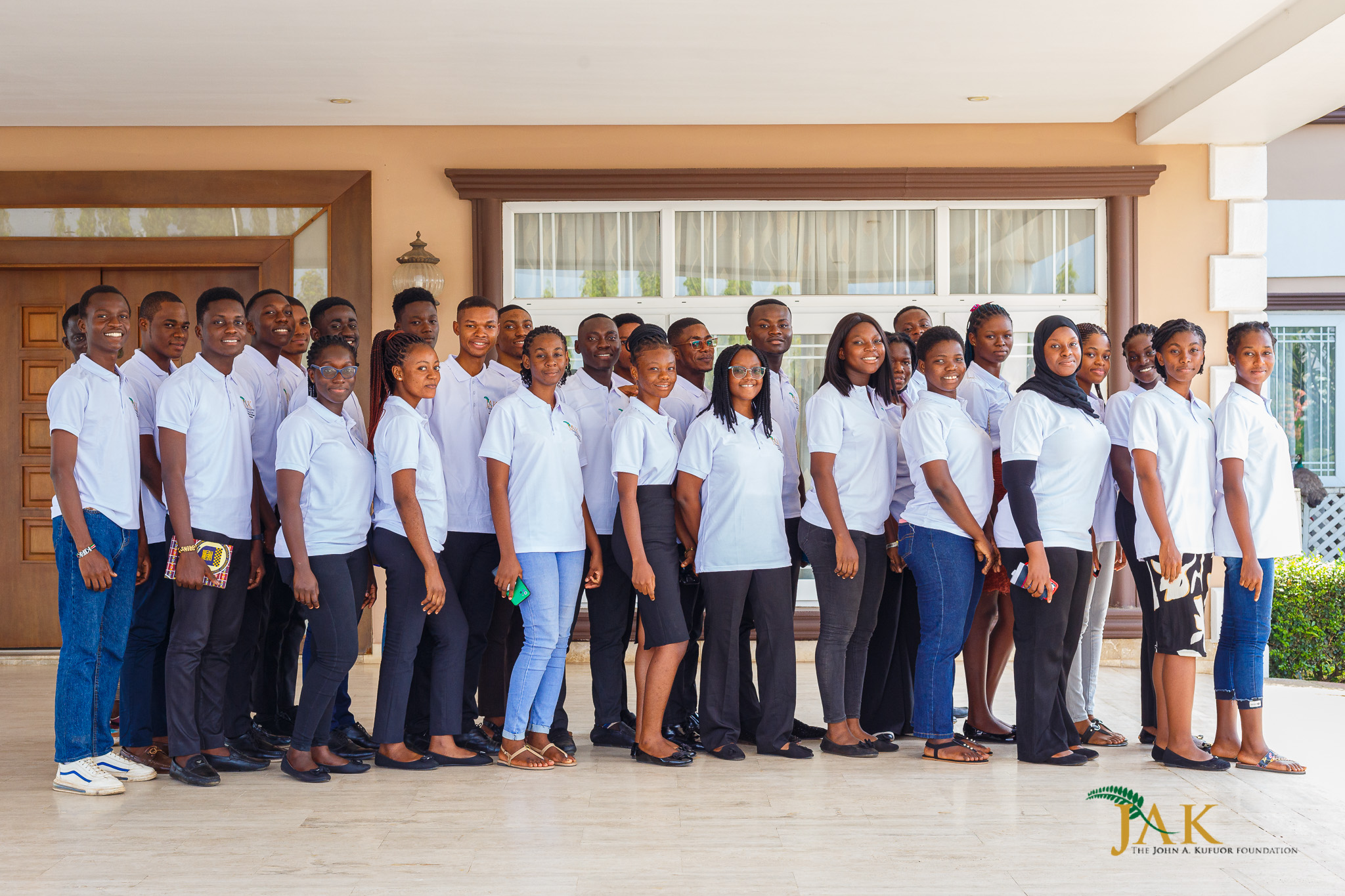Kufuor Scholar Salomei Odei Writes: Two Ears And But A Mouth
The durbar courtyard blossomed in a variety of designs and colours of Ashanti kente cloth. Dotted around were unique African prints wrapped around waists, though some were tailored to fit the bodies that wore them. The beauty of the traditional umbrellas made with heavy cloth with interspersed wooden rays spanning the radius of the umbrella, and throughout its perimeter bedecked the insipid blue skies.
I was startled by the sudden sound of talking drums and traditional music that accompanied the procession of the chiefs and elders of the Asanteman. Adorned in full regalia, their bodies gyrated to the rhythm of the music. With radiating smiles, I could feel how deep their connection was to the long-standing Ashanti tradition. You could estimate the ranks of the chiefs by the size, beauty, and golden totem that stood at the end tips of their umbrella. In the moment, I could almost see the music and taste the colours.

The experience was real yet magical, surreal, or maybe even divine. It was our visit to the Manhyia palace – all the current Kufuor Scholars – casually dressed in our logoed T-shirts and graced with the twin advantages of experiencing Manhyia during one of the many Akwasidae events.
Listening is a virtue
In an orderly manner, the subjects whose turns came to speak to the Asantehene walked to the middle of the courtyard, faced the “okyeame” (spokesperson), and spoke to him. The “okyeame” would repeat the information given to him to the Asantehene who whispers everything he had to say to his “okyeame”. The “okyeame” would also relay to the audience all that he received. It was my first visit to the Manhyia Palace and I found this system of communication very unique. Aside its uniqueness, it struck me how attentively and adeptly the Asantehene listened. Not once did he interrupt anyone who stood in front of him.

When it was our turn to speak to him, the class leaders went to the front to represent the whole group together with the Chief Executive Officer of the John A. Kufuor Foundation Prof. Baffour Agyemang – Duah, our coordinator Dr. Pascal Brenya, and Mrs. Irene Ansah Asare Horsham of the MountCrest University College. The observation was the same. He never interrupted. He listened through it all with a great deal of tact and diplomacy. With all the glamour, power, and wealth, he still had the patience and humility to listen.
The visit exposed me to the political system of the Ashanti Kingdom. During the transient period I spent there, I reflected on how a lot of the time we want to be listened to. It feels good to be listened to. We actually have two ears and but one mouth so we may listen twice as much as we speak. After a nerve-pummeling five-hour trip to the Ashanti region and an extra 45 minutes to the Manhyia Palace, if there was one thing I learned from the Ashanti leadership, it is unarguably the art of listening. No matter how wise or right we feel we are, we will never make the great leaders we want to be if we parent every other skill in our lives and leave orphan the art of listening.

Richness of Ashanti culture
I can’t stop talking about what I witnessed, especially when the Asantehene walked into the courtyard. In a split second, the drums beat faster, the singing grew louder, the gong gong even sounded faster and louder. This time, I was not startled. Instead, my brows furrowed in utter confusion. So many humans had entered the courtyard from nowhere, some of whom carried peculiar items like pots, stools, herbs, and one of the elders poured libation. A few were dressed like warriors, others carried beautifully curved horns and wore a simple cloth around their waists. From the other end of the courtyard, I saw the largest traditional umbrella, with the shiniest gold totem and the heaviest cloth. The person who held it did a spectacular job announcing its presence by shaking it up and down, rotating around, and shifting it side-to-side.
I indeed needed no explanation for the preceding events; the Asantehene had arrived. There was a heavy presence in the atmosphere and everyone wanted to see him. I was disadvantaged by my lilliputian stature so I stood on a seat to get a better view, but my vision still couldn’t make it past the perfectly sardined bodies of his retinue. I had to wait for everything and everyone to settle to even get a glimpse of him. I realized that in the midst of the disadvantage, sometimes patience may be the only way out.

Relative calmness took over the place after everyone had moved to their respective positions. In front of the Asantehene were elders who sat bare-chested with cloth wrapped around their waists in two rows facing each other. They all held golden staffs that had two bulbous processes at the proximal and distal ends. The king himself had a private footstool in front of him where he placed his jeweled feet. A little away from them were men who had horns and blew them from time to time, the sound blending with that from the talking drums.
Behind the Asantehene were youthful-looking boys also in African cloth, one holding a flute, and to their right was a man with a large fan who moved it up and down to produce cool air. The drumming continued; the singing continued. At times, the horns blew. After what I believe is the loudest beating of drums I have ever heard, an hour-long round of appellations followed. Initially, it sounded like singing. It was later that a fellow scholar prompted me they were appellations to the Asantehene and the other chiefs there in turns. I was put into high spirits every single time I heard the flute, or the horns being played intermittently during the appellations. Both instruments seemed to resonate with me on a very deep level. The whole ceremony was a sight to behold. And I will remember it for the rest of my life.
By Salomei Odei





